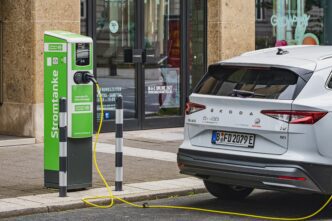Executive Summary
The Story So Far
Why This Matters
Who Thinks What?
European Union environment ministers have endorsed a revised climate law, committing the bloc to a 90% reduction in greenhouse gas emissions by 2040. The agreement, reached on Wednesday after months of political deadlock, includes significant flexibilities for member states to achieve this ambitious target, which now awaits deliberation by the European Parliament.
EU Climate Target Details
The core of the revised legislation establishes a legally binding headline target of a 90% reduction in greenhouse gas emissions by 2040, relative to 1990 levels. This target is designed with a domestic reduction of 85% and allows for up to 5% to be met through international carbon credits, a key point of negotiation.
Climate Action European Commissioner Wopke Hoekstra acknowledged the compromise, stating, “We’ve listened and worked with all parties around the table that brought us to a very good compromise.” The Danish Presidency, which led the EU27 bloc through the talks, emphasized the necessity of these flexibilities to secure the agreement.
The Role of Carbon Credits
International carbon credits, which are tradable certificates used by industries to offset emissions, were central to the discussions. Ministers agreed to increase the allowable volume of these credits to 5%, up from the European Commission’s initial proposal of 3%. An additional 5% could be considered later if the bloc deviates from its 90% reduction pathway.
The use of these credits is set to begin in 2036, preceded by a pilot period between 2031 and 2035. While proponents see them as a way to ease the transition for industries, environmental groups have voiced opposition, arguing that they merely shift pollution rather than reducing it overall.
Member State Divisions and Concerns
The negotiations highlighted divisions among member states regarding the pace and method of decarbonization. Countries like Finland, Germany, the Netherlands, Portugal, Slovenia, Spain, and Sweden advocated for a lower 3% target on polluting credits, while France and Italy pressed for 5%, and Poland sought 10%.
Ultimately, the Czech Republic, Hungary, Slovakia, and Poland did not support the law’s revision, with Belgium and Bulgaria abstaining. Many nations, particularly those with significant heavy industry, expressed fears that stringent climate policies would harm the competitiveness of European industries and increase production costs.
Broader Context and Geopolitical Impact
This revision is part of the broader European Climate Law, which commits the EU to climate neutrality by 2050. The 2040 target is crucial for bridging the gap between the existing 2030 goals and the long-term 2050 ambition. The EU is also under pressure to present a clear and ambitious position at the upcoming UN climate summit, COP30, in Belém, Brazil.
German Environment Minister Carsten Schneider underscored the need for the EU to lead in clean technologies while addressing competitiveness challenges from global partners. Romanian Environment Minister Diana-Anda Buzoianu also highlighted the impact of the current geopolitical situation, noting increased defence expenditures that citizens and companies must cover, which adds another layer of complexity to climate policy.
Next Steps for the European Parliament
The agreement among environment ministers has resolved a significant political impasse at the Council level. The focus now shifts to the European Parliament, which will deliberate on the 2040 climate target and engage in further negotiations with EU countries. This parliamentary review is a critical step in finalizing the bloc’s updated climate commitments.








